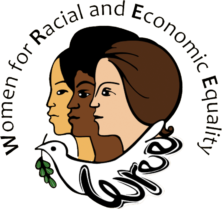Throughout history, women have faced egregious discrimination and unfair treatment in comparison to their male counterparts in the workforce. Without a doubt, sexism and capitalism coexist as a force women in the United States had to fight and pave their way through. Yet, there is still much more progress to be made. Many battles won by women has been through union work. To look for opportunities for growth and learn what more can be done, it is important to take a step back to recognize the leaps made by women.
Described by the Chicago Police Department as “more dangerous than a thousand rioters,” Lucy Parsons is a strong example of woman leadership in union work. She was enslaved early in her life and consistently participated in activism for the homeless, women of color, political prisoners, and lead marches for seamstresses. Along with her husband, Albert Parsons, she helped found the International Working People’s Association and was one of the first female members of the Industrial Worker of the World (IWW).
American women were some of the first to workers to form unions in the Industrial Revolution after being thrown into the workforce. Unions were a way for working women to bring about change in the labor movement, especially at a time when voting was not permitted. For example, women textile workers took on the first of America’s labor strikes, reform groups, and protests. They fought to change grueling fourteen-hour shifts, dangerous conditions, and extremely low wages. The International Ladies Garment Workers Union formed through uniting with male co-workers to achieve higher wages and shorter hours.
Woman-dominated sectors of labor such as nursing, retail, and service entailed lower wages and longer hours after women lost their former jobs once World War II ended. Such conditions, as well as sexist views of women in the workforce, gave birth to the second wave of feminism. The Coalition of Labor Union Women (CLUW) formed as a fierce advocate for women in the workforce; seeking to increase female participation and leadership in unions. Many issues in the workforce specifically effecting women were addressed, such as equal pay, nondiscriminatory hiring, paid family leave, and sexual harassment.
Women have worked hard to fight for equal rights and opportunities as men in the workplace. Under the chains of capitalism, unfair treatment and exploitation will always be commonplace. A woman’s place is not only in the workforce or the union, but also in the revolution to destroy capitalism.
